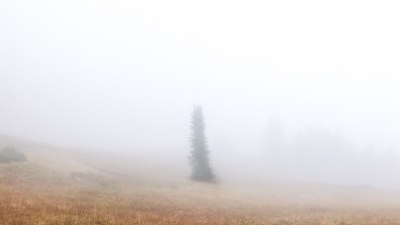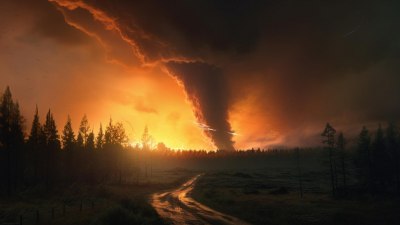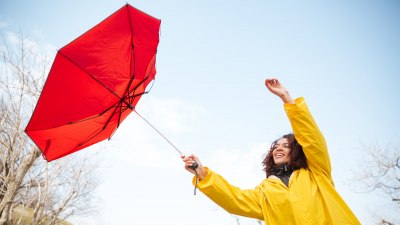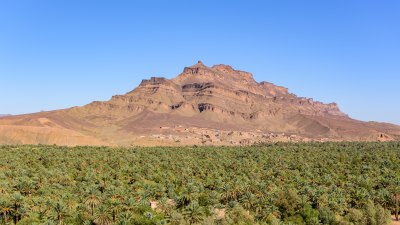When the Storm Passed and So Did We
Explore the profound impact of storms and human resilience in this evocative narrative on weather, change, and growth.
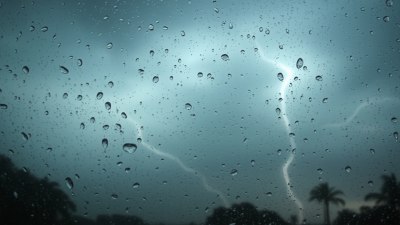
Storms arrive without invitation, bringing with them a force that disrupts the familiar rhythms of life. They are moments that command attention, forcing us to pause, reflect, and adapt to a reality briefly altered by nature's immense power. When the storm passed and so did we, what remains is a tale not only of survival but of transformation.
The wind howled like a wild beast, relentless and unforgiving. Trees bent deeply, threatening to uproot themselves from the earth as if to escape the violent tempest. Raindrops hit the windowpane with the sound of a thousand drummers, each strike an echo of the storm's ferocity. For hours, the world outside the fragile walls of shelter became a maelstrom of sound, sight, and emotion.
Inside, people huddled together, sharing stories, fears, and hopes. The storm was a great equalizer – stripping away pretenses and uniting everyone in the primal need for safety. In these moments, the usual divisions of daily life melted away. The passing storm reminded us that nature, with all its unpredictable rage, also offers an opportunity to cultivate resilience.
Resilience is not simply enduring a storm but how we rebuild and recover after it has passed. When the sky finally cleared, the silence that followed was profound – almost sacred. The once deafening roar subsided into the gentle drip of water trickling from rooftops and leaves. Nature, ever adaptable, began its slow process of healing.
The immediate aftermath of a storm reveals the raw impact of its power. Streets transformed into rivers, homes soaked to their foundations, and familiar landscapes reshaped by fallen branches and debris. Yet, amidst the destruction, there were signs of life reclaiming a shattered world. Birds cautiously returned to their perches, tentative but persistent. Flowers lifted their bowed heads, thirsting for sunlight after the heavy rain. These small acts of recovery serve as metaphors for human endurance.
Human communities, too, showed remarkable fortitude. Neighbors checked on one another, sharing resources, labor, and support. Stories circulated of kindness and heroism: a family sheltering a displaced friend, volunteers clearing debris from roads, or local workers restoring electricity under difficult conditions. Communal effort in the wake of disaster underlines a truth rooted in human nature – the instinct to come together when faced with adversity.
But storms teach lessons that extend beyond immediate survival and recovery. They prompt reflection on vulnerability and preparedness. The experience makes clear the importance of infrastructure designed to withstand extreme weather and the necessity for emergency planning. Authorities and citizens alike acknowledge these priorities, working towards building societies less susceptible to storm damage.
Furthermore, storms highlight climate realities that many can no longer ignore. Increasingly frequent and severe storms are a visible symptom of shifting global patterns. Conversations that once seemed abstract or distant become urgent. The passing storm, therefore, serves as a call to action to address environmental challenges and build sustainable practices.
On a more intimate scale, each person affected by a storm carries their own story of loss and hope. For some, a storm means grieving a lost home or cherished possession. For others, it is the anxiety of uncertainty and the exertion of recovery efforts. Still, there is often a resilience born not just from necessity but from a renewed appreciation for life’s fragility and its fleeting beauty.
Survivors frequently speak of changed perspectives. The storm acts as a catalyst, reshaping priorities and values. What once seemed essential may now feel trivial, while relationships and community bonds gain greater significance. These internal transformations can spark personal growth as individuals realign their lives in response to the upheaval.
Articulating the experience of a storm is challenging. Words can fail to capture the sensory overload – the blinding flashes of lightning, the thunderous crashes that shake the earth, the cold bite of rain against the skin. More challenging still is conveying the emotional turbulence: fear intertwined with awe, loss mingled with gratitude.
Literature and art have long sought to express these complex nuances. Storms often symbolize turmoil and change, reflecting inner emotional storms or societal upheavals. Through metaphor and imagery, creators give shape to the chaos, transforming pain and uncertainty into beauty and insight.
Photography, too, documents both devastation and the delicate moments of calm that follow. Visual records of flooded streets or broken trees tell stories of destruction but can also reveal patterns of strength and recovery. These images resonate because they capture universal experiences of vulnerability and hope.
Communities worldwide celebrate rituals and traditions that mark the passing of storms, integrating them into collective memory. Festivals, storytelling sessions, and memorials serve to honor those impacted and preserve lessons learned. This cultural incorporation strengthens social cohesion and fosters a shared identity rooted in resilience.
Technological advancements now play a crucial role in storm prediction and response. Meteorological science has greatly improved early warning systems, capable of tracking storms with increasing accuracy. This progress allows for better preparation and reduces loss of life. Communication technologies connect responders and residents, coordinating efforts efficiently.
However, technology is only as effective as the willingness and ability of communities to utilize it properly. Education and awareness campaigns have become vital components in disaster risk management. Teaching people how to respond to warnings, secure their homes, and evacuate safely can make the difference between tragedy and survival.
Economic implications of storms are significant as well. Repair costs, insurance claims, and lost productivity create burdens that extend beyond the immediate aftermath. For vulnerable populations, these financial stresses can exacerbate existing inequalities, making recovery even more difficult. Addressing these disparities is a key aspect of building comprehensive resilience strategies.
Environmental restoration initiatives have gained attention as part of storm recovery. Replanting trees, restoring wetlands, and stabilizing soil help mitigate future storm impacts. Such efforts also promote biodiversity and improve ecosystem health, creating a feedback loop that benefits both nature and human communities.
Urban planning increasingly incorporates storm resilience, with designs emphasizing flood control, green infrastructure, and climate adaptation. Cities recognize that building back better is more sustainable and cost-effective than repeatedly repairing damaged structures. These forward-looking approaches also contribute to long-term safety and quality of life.
Psychological support is an often overlooked but crucial element after a storm. Trauma and stress disorders may manifest, requiring accessible mental health services. Community support groups, counseling, and outreach programs help individuals cope with losses and rebuild emotional strength.
Children’s experiences deserve special attention. Disrupted schooling and home environments can have lasting effects. Providing stability, fostering open communication, and involving children in recovery activities help mitigate negative impacts and empower younger generations.
Education about storms extends beyond immediate disaster response to understanding broader climate literacy. Teaching about atmospheric science, weather patterns, and environmental stewardship encourages proactive engagement. A well-informed public is better equipped to participate in mitigation and adaptation efforts.
International cooperation plays a role, especially in regions prone to devastating storms. Sharing knowledge, resources, and technology improves global preparedness. Collaborative research helps predict storms and develop innovative solutions that cross national boundaries.
When reflecting on the phrase 'When the storm passed and so did we,' a dual meaning emerges. It suggests that just as storms move on, so do people – physically, emotionally, and mentally. This transient nature is both a challenge and an opportunity, underscoring the impermanence that defines much of human experience.
The metaphor extends to life’s cycles beyond weather: hardships, changes, and upheavals that everyone encounters. Each storm reminds us that adversity is temporary, and with it comes the chance for renewal. Change is inherent, and survival depends on adaptability.
By examining this cycle through multiple lenses – scientific, social, cultural, and personal – a holistic understanding arises. The story of storms is interwoven with stories of humanity itself, reflecting our vulnerabilities, strengths, and aspirations.
Thus, the passage of a storm is never just an event in nature but a narrative of resilience written in the lives it touches. It is a chapter filled with lessons on humility, community, and hope. The aftermath invites us to rebuild not only structures but connections, priorities, and our relationship to the environment.
Through these experiences, a collective wisdom develops, passed down through generations. This wisdom informs how societies prepare for the inevitable disruptions ahead, fostering a culture that honors both the power and the fragility of life.
In embracing the storm’s passage, we acknowledge our transient place in the vast forces of nature while affirming the enduring human spirit. We move forward, carrying memories of what was lost and the strength gained, ready to face whatever storms lie ahead with courage and compassion.
